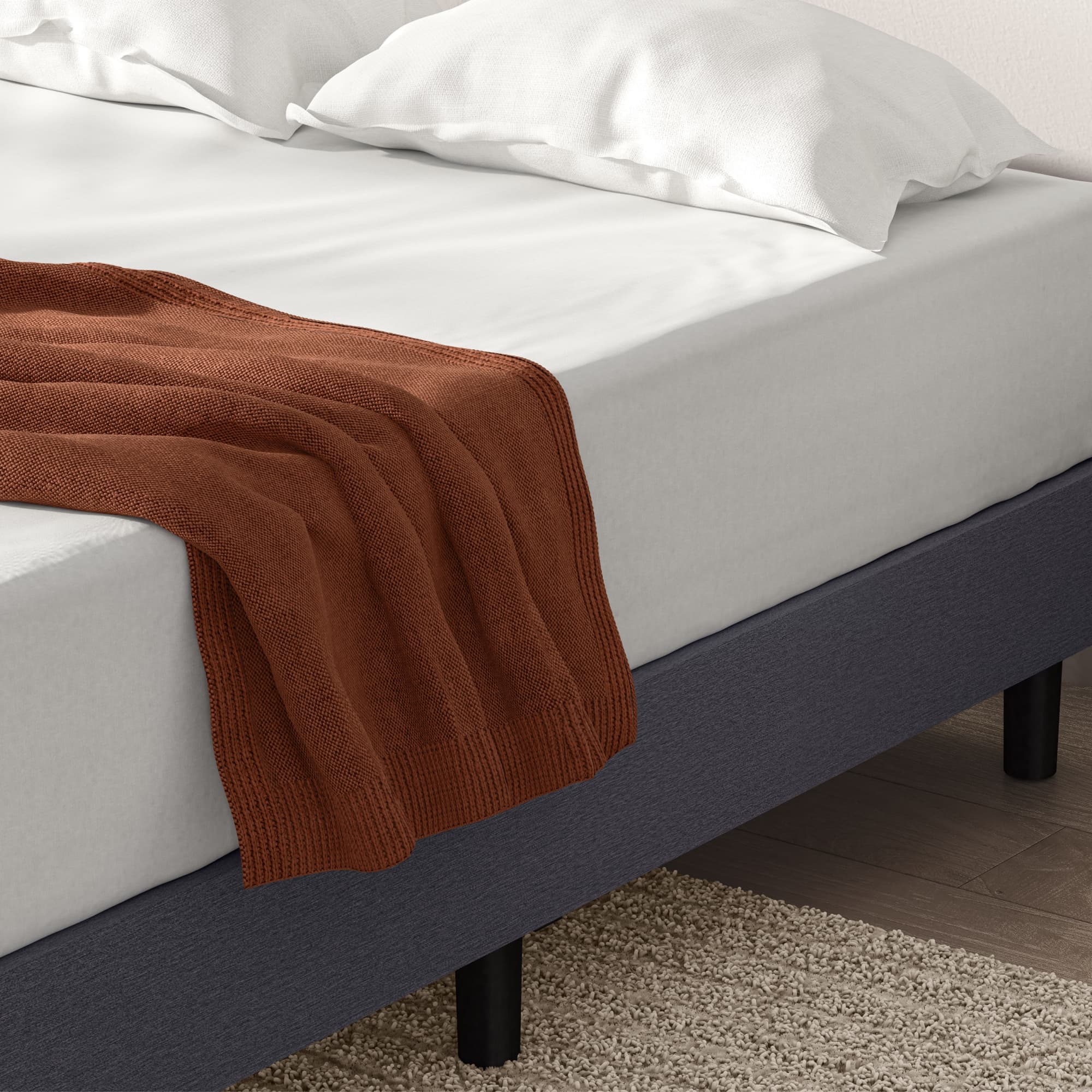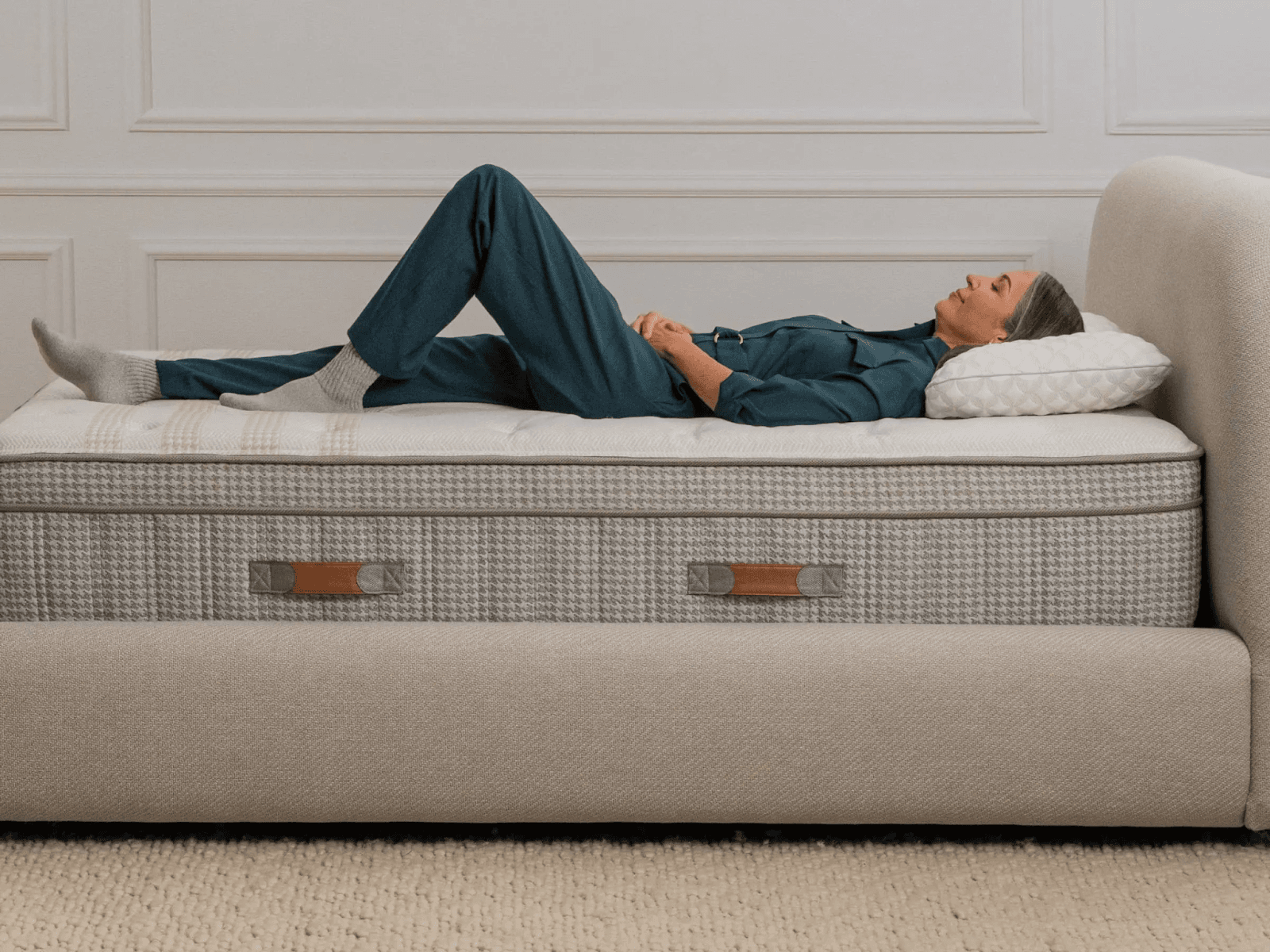Are you thinking about buying a brand-new duvet cover or set? If you're wondering, "What is a duvet cover?" and aren't sure why you need one or what you use it for, we urge you to keep reading! In addition, if you don't know where or how to begin the blanket selection process, we've got you covered!
What is a Duvet?
Duvets are soft, fluffy inserts placed on top of mattresses to provide warmth throughout the night (usually without needing additional bedding or blankets). Duvets consist of two pieces, the insert and the cover (similar to how a pillow goes into a pillowcase). For duvet inserts, a variety of filling options are available. These include feathers, down, synthetic fibers (polyesters), wool, cotton, and microfibers.
When you know the filling you want, you can choose how heavy you want the blanket to be. Naturally, the heavier the blanket, the warmer it will be. Generally, duvet inserts are white and come without any patterns or embellishments. This means can choose the colors and styles you prefer for your cover and change them whenever you feel inspired.
Types of Duvet Inserts
The fill, or the material, inside a duvet's insert, determines the loft or fluffiness of the duvet. In general, inserts are made of natural down or synthetic fibers. For example, goose and duck feathers are used to make natural down, from smaller feathers underneath the larger quilled feathers. Down is lightweight, fluffy, and provides warmth and insulation during cold months, making it a suitable choice for cold sleepers throughout the year. Some people may, however, experience allergic reactions to down.
Leesa inserts are made from 100% polyester, ensuring they are machine washable, lightweight, hypoallergenic, ethically sourced, and animal-free. In addition, Leesa's insert has a soft, comfortable, and breathable 100% organic cotton shell, the fabric between the insert and the cover. Further, Leesa's shells are equipped with four internal ties to ensure the insert stays in place all year without needing to be re-fluffed.
What is a Duvet Cover?
In the same way, a pillow resides inside a pillowcase; a duvet cover encases a duvet insert. Typically, you will see a side with buttons, snaps, ties, or zippers. These are the sides you will open to place your duvet in and close afterward.
These covers provide an extra layer of protection for your comforter against body oils and stains and are machine washable. Of course, not everyone will want to use a duvet cover, which is entirely okay. However, we strongly recommend one because it is thinner and lighter, making it significantly easier to wash than your duvet! Read the manufacturer's cleaning instructions before washing your duvet cover for the most successful results.
Types of Duvet Covers
Duvet covers are available in various fabrics and can be tailored to match your sleeping style, the season, and environmental considerations. Duvet covers come in flannel, cotton, linen, polyester, bamboo, or silk.
Leesa's duvet covers and sham sets are made from 100% cotton with a 140-thread count. This makes them super soft, comfortable, breathable, machine washable, and lightweight.
Flannel
Durable and soft fabric
Keeps you warm on a cold night, making it a wise choice for those that sleep cold year-round
Cleans easily and can be machine washed
Cotton
Easy-clean fabric, machine washability, it requires only minor maintenance
Typically more budget-friendly
On a cold night, cotton keeps you warm, and on a hot night, cotton keeps you cool
Linen
Breathable material
Ideal for summer or for people who sleep cold year-round
Natural fibers regulate temperature
Polyester
Designed to resist wrinkles and not fade over time
Commonly less expensive than natural alternatives
Better for people who sleep cold because it retains heat more effectively
Bamboo
Eco-friendly option
Exceptionally durable fabric with a luxurious feel
Hypoallergenic, safe for sensitive skin
Suitable for hot sleepers due to its moisture-wicking properties
Silk
Dry cleaning required
Lightweight and breathable
Regulates body temperature
Can be used year-round
Benefits of a Duvet Cover
Wide selection of fabrics, colors, and styles to choose from
Fully customizable to fit your needs and preferences
Ensures clean duvets
Body oil, makeup, dust, pet hair, and drinks and food will land on the cover rather than your duvet (which is more time-consuming to wash)
Easy to clean (depending on the material used)
This fabric is easy to take off, is washed the same as bed sheets, and dries quickly
Functional year round
When it's hot outside, a duvet cover can serve as a substitute for a blanket
Keep warm in winter with a flannel duvet cover
An affordable option (depending on fabric choice)
How to Choose a Duvet Cover
Consider the material
Cold sleepers should choose a material that keeps them warm
Hot sleepers should pick breathable and absorbent materials
Choose the right size duvet for your bed
Choose the right size duvet for your cover; extra space shouldn't exceed a few inches
Thread count
In contrast to sheets, you want a lower number, somewhere between 140 and 300; anything higher will result in a heavy cover
Cleaning and maintenance
Are you looking for dry-clean only, or do you want it to be able to be washed at home?
Cost
Identify your budget and the type of cover you need based on your needs and your budget
Too many options? You don't have to do all the thinking! We did it for you! A perfect fit for all seasons, Leesa's duvet covers and shams are made from 100% cotton and come with a crisp 140-thread count. They are super comfy, temperature-regulating, lightweight, and suitable for any season. Four corner ties on our duvet covers make washing and re-inserting the duvet easy
How Often Should You Wash a Duvet Cover?
Clean bedding is essential to a good night's rest and your health! Duvet covers should be washed the same way as other bedding. The best approach is to gauge how much use it receives based on how often it is used.
Some questions to consider are:
Do you use a top sheet or sleep directly on or under the duvet cover?
Are kids or pets resting or crawling on the top? At night, do you sweat and overheat?
Are you sharing a bed with anyone?
Two people's sweat and skin cells are twice those produced by one, so wash accordingly!
Does your bedroom have a humidifier?
Sheets can become damp and prone to bacteria if they get exposed to moisture
During the night, do you keep a fan running?
You may be blowing dust mites all over your bed
Answering "yes" to most questions indicates that you should wash your duvet set, pillow shams, and sheet weekly. Weekly cleaning might sound like a lot, but trust us. It's well worth keeping skin and body oils, sweat, saliva (for droolers), and dander at bay.
How to Put on a Duvet Cover
Duvet covers are great blankets! However, the first and most important step is getting the duvet cover over the duvet insert. We've made a step-by-step guide on how to do this process so you won't feel frustrated before sleeping with your new duvet set!
Turn the duvet cover inside out
When you lay your duvet cover on your bed, the opening should be at the foot
Place your comforter over the cover
Tightly roll the duvet cover from the head of the bed toward the foot
Cover the bundle's sides by inverting the cover's opening. Close the duvet cover with a button or zipper
Once you have completed unrolling the bundle (this time from the feet to the head), fluff it up!
Duvet vs Comforter: What's the Difference?
It is common for people to confuse the words duvet and comforter, but the two are different. Typically, comforters contain polyester, down (Goose or duck feathers), cotton, or wool stuffing stitched around the perimeter to prevent shifting. Various colors and patterns are available, as well as different thicknesses to suit different climates and sleeping preferences.
Inside the duvet cover is a duvet insert. If you just asked yourself, "what is a duvet cover?" you are not alone! A duvet cover is essentially the "case" that protects the duvet insert. The inserts are similar to comforters in that they are stuffed and sewn together. Most duvet inserts are made of natural down or synthetic materials that mimic natural down.
In addition, the outer layer is made of cotton and stitched together to keep the stuffing from falling out. Duvets also come in various weights to fit cool and warm temperatures. The inner layer of a duvet often only comes in white or off-white. But covers are available in a wide assortment of colors and patterns and protect the inner layer from stains and spills.
Since duvet covers are often inexpensive, you can upgrade them whenever you want to upgrade your bed's appearance. Unlike a comforter, a duvet has a cover. In summer, duvet covers function as top sheets, and duvets can be used without a cover, whereas the comforter will remain the same.
How Can Leesa Help?
In this article, we have covered a lot of ground. First, you learned about duvets, inserts, and covers. Additionally, you found out the benefits of having a duvet cover, how often to wash one, and even how to put everything together. The good news is now you can go forth and make confident purchases! Or, if you are still feeling overwhelmed, please don't blame yourself, this is a lot of information, and we want to offer some more help!
At Leesa, we can take care of all your needs! Our duvet comforters feature a case of 100% soft, cozy, and breathable organic cotton and an insert of 100% polyester, making them hypoallergenic and lightweight. The Leesa duvet comforter and sham set are just as great.
As part of the set, you will receive two pillowcases that open from the back and a duvet cover. Featuring 100% organic cotton, the cover and sham set are super soft, lightweight, and machine washable. The cover also features four corner ties to ensure everything remains in place. Besides being easily removable, all items are machine washable. This means they are ideal for year-round use and come in all sizes for everyone in the family! Get a better night's sleep for you and your family with just a few clicks!
FAQs
What do you put inside a duvet cover?
You put a duvet insert inside of a duvet cover.
What features to look for in a duvet cover?
You should first consider what material suits your needs. For example, whether you sleep warm or cold, what is comfortable for you, or if you have any allergies. After that, make sure you know the size of your mattress (to ensure the cover fits snugly over the insert). Next, decide how heavy you want the cover to be (the lower the thread count, the lighter the cover).
The next step is determining how much cleaning and maintenance you are willing to perform; different fabrics require different upkeep. Be realistic about this! Don't worry; we won't judge you! Lastly, decide what price is acceptable to you.
Can I put a regular comforter in a duvet cover?
It certainly is possible, but that does not mean that you should! Because comforters are machine-washable, they are ready to use immediately after purchase.



